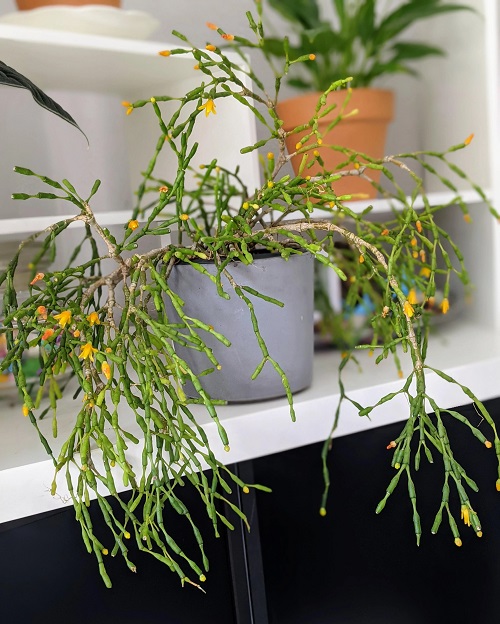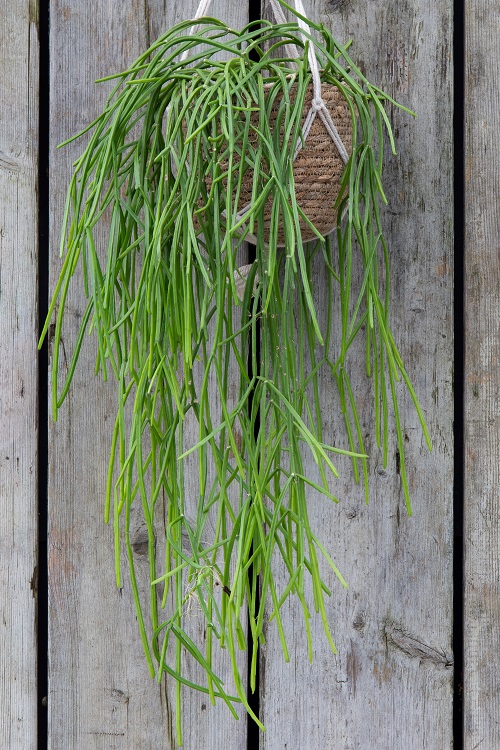Looking for easy-to-care-for, low-maintenance Plants That Look Like Pencil Cactus? End your quest with these top picks!
Do you admire the look of pencil cactus but want to explore similar options? You’re in for a treat! This article has a list of some plants that resemble pencil cactus in appearance and growth habits.
Plants That Look Like Pencil Cactus
1. Rhipsalis Clavata
Botanical Name: Rhipsalis clavata
Native to Brazil, Rhipsalis clavata looks quite identical to a pencil cactus with its cylindrical green stems. This drooping succulent can grow up to 3.3 feet (1m) long in the morning sun and full shade in the afternoon.
2. Rhipsalis Capilliformis
Botanical Name: Rhipsalis capilliformis
Another plant that shares similarities with pencil cactus is Rhipsalis capilliformis. It’s an epiphytic succulent with thin, elongated stems, hence the resemblance. However, unlike pencil cactus, this succulent has a trailing habit.
3. Mistletoe Cactus
Botanical Name: Rhipsalis Baccifera
The mistletoe cactus is the spitting image of a pencil cactus due to its cylindrical, multi-branched stems. Its drooping branches can grow up to 0.2 inches in diameter in optimal conditions.
Note – Besides being a popular ornamental plant, the mistletoe cactus has medicinal uses, too.
4. Dancing Bones Cactus

Botanical Name: Hatiora Salicornioides
Untrained eyes might mistake this bushy succulent for a pencil cactus due to its slender, multi-branched stems. These stems can grow up to 2 feet long and feature 1.2 inches long smaller segments.
5. Candelilla
Botanical Name: Euphorbia Antisyphillitica
The grayish green, pencil-like stems make this succulent an excellent accent specimen for desert, rock, and succulent gardens. It also offers small, creamy flowers with pinkish-red centers in spring and early summer.
6. Narrow-Leaf Chalksticks
Botanical Name: Senecio vitalis
This pencil cactus look-alike features slightly upcurved, gray-green cylindrical leaves and small creamy-white blooms. It can become 18–24 inches tall and 3-5 feet wide.
Caution – If you’re a pet owner, avoid growing this succulent in your garden because it’s toxic to dogs and cats.






